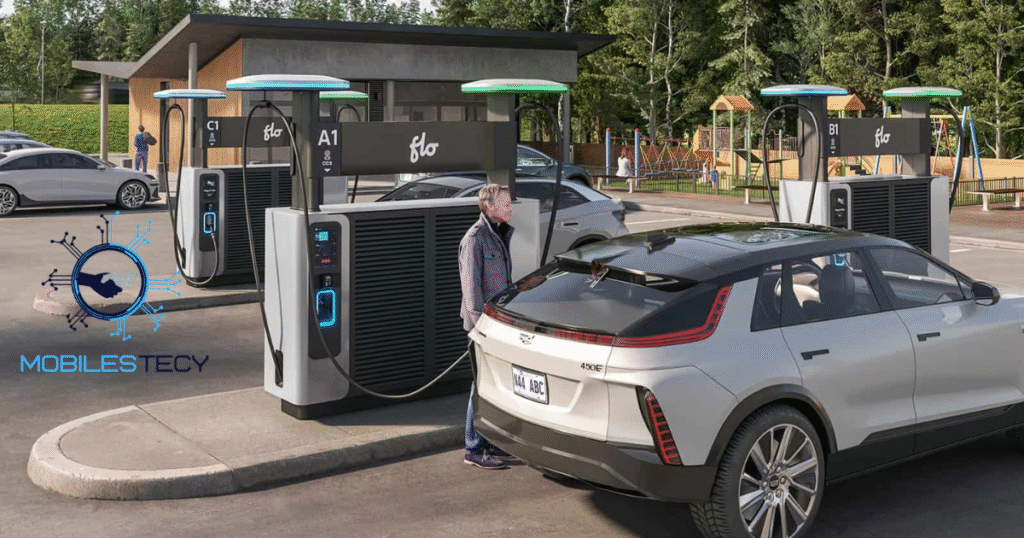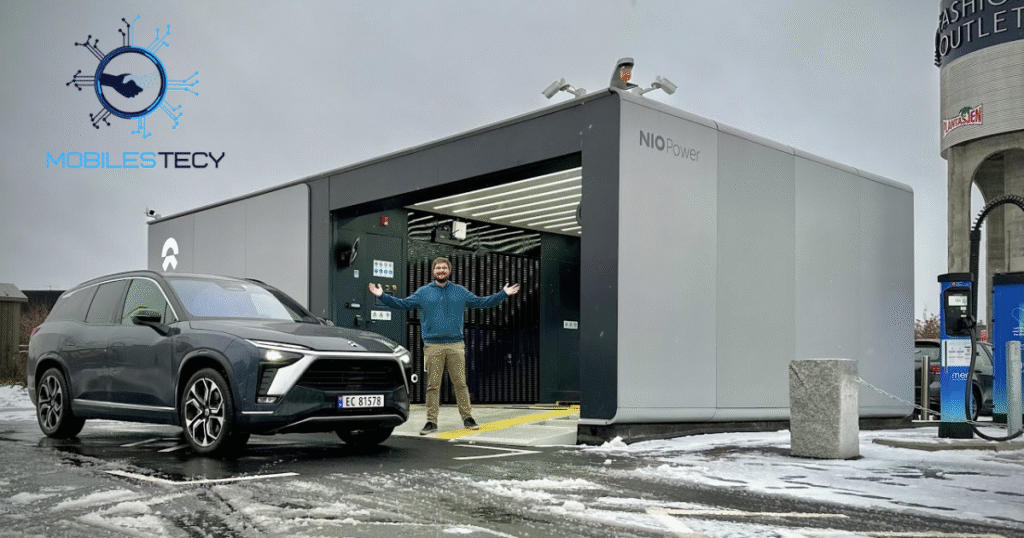EV Charging vehicles are transforming transportation, and charging technology is rapidly evolving. Future charging methods promise faster speeds, improved convenience, and stronger grid integration. These innovations aim to reduce range anxiety and boost electric vehicle adoption. Governments, automakers, and technology companies are investing heavily in advanced charging. Together, they are shaping an infrastructure that meets future mobility needs.
Ultra-fast charging solutions will allow vehicles to recharge within minutes safely. Advances in battery design and thermal management enable quicker, reliable energy transfer. Such improvements are vital for long-haul trucks, buses, and commercial fleets. Charging technology is not only faster but also increasingly more efficient. This progress will redefine user experience and operational viability for electric transport.
EV charging and vehicle-to-grid systems will enhance convenience and flexibility greatly. Dynamic charging highways may one day power vehicles while continuously driving. These innovations reduce dependence on large batteries and expensive charging downtime. Smart grid integration ensures stability while supporting renewable energy growth globally. The future of charging promises sustainability, speed, and wider accessibility.
Table of Contents
Ultra-Fast and Megawatt EV Charging

The future of EV charging includes ultra-fast stations with massive power. These chargers reduce waiting times, allowing drivers to recharge in minutes. Megawatt Charging Systems are designed specifically for heavy-duty trucks and buses. Such advancements improve efficiency and support long-distance electric transportation adoption worldwide. They also reduce operational downtime, which is critical for commercial fleets.
Ultra-fast charging creates engineering challenges requiring innovative thermal management systems. Batteries must withstand rapid charging without overheating or degrading their performance. Advanced cooling techniques and durable battery chemistries are under active development today. Industry collaborations focus on safety, reliability, and standardized system designs globally. These improvements ensure charging solutions can meet rising demand securely.
Infrastructure expansion is essential to make ultra-fast charging accessible to everyone. Highway corridors and urban networks require thousands of high-capacity charging stations. Governments and private companies must coordinate to fund large-scale installations. Investment in grids and storage systems also strengthens long-term charging resilience. Widespread deployment will shape the future of electrified transportation everywhere.
Grid Integration and Stability
Smart charging aligns EV demand with renewable supply for optimal efficiency. It helps balance intermittent solar and wind power across diverse grids. By distributing loads intelligently, smart systems prevent costly grid upgrades. This ensures stability while enabling cleaner and more affordable energy use.
Utilities are testing advanced software platforms to coordinate charging across regions. These systems predict demand, prioritize needs, and avoid local overload issues. Real-time monitoring ensures safety while maximizing renewable utilization across communities. Such innovations will be critical as EV adoption continues accelerating globally.
Vehicle-to-Grid (V2G) and Smart Charging

Vehicle-to-Grid technology transforms EVs into mobile energy storage resources globally. Cars can supply electricity back to homes, buildings, or regional power grids. This bidirectional capability reduces peak demand and strengthens renewable energy integration. V2G also provides additional income opportunities for vehicle owners and operators. Together, these benefits make V2G a promising future charging innovation.
Smart charging systems ensure energy is delivered when grids can handle it. They align charging times with off-peak hours, reducing stress on infrastructure. Dynamic pricing models encourage users to charge when electricity is cheaper. Artificial intelligence and predictive analytics help optimize grid-wide charging loads. This ensures stability, efficiency, and affordability for EV owners everywhere.
Barriers remain to widespread adoption of V2G and smart charging systems. Interoperability standards, regulatory frameworks, and battery warranty concerns still hinder progress. Utilities, automakers, and policymakers must collaborate to overcome these challenges together. Pilot programs worldwide demonstrate the potential benefits when solutions are aligned. With collaboration, V2G can scale and reshape modern energy landscapes successfully.
Charging Infrastructure Expansion
Expanding EV charging infrastructure requires significant investments from public and private sectors. Highway fast-charging corridors reduce range anxiety for long-distance EV travel. Urban centers must install reliable networks to support growing vehicle adoption. Rural areas also need charging access to avoid mobility inequality.
Strategic planning ensures stations are placed where demand will grow strongest. Data analytics help predict traffic patterns and vehicle charging requirements effectively. Collaboration between automakers, governments, and utilities accelerates deployment timelines significantly. Comprehensive expansion strategies secure long-term charging reliability worldwide.
Wireless and Dynamic Charging

Wireless charging enhances convenience by removing the need for physical cables and manual connections. Using inductive charging pads, vehicles can power up simply by parking over embedded coils. This approach improves everyday usability and reduces wear on charging ports and plugs. It is especially beneficial for older drivers or individuals with limited mobility. Several demonstration projects already show how seamlessly this technology can integrate into daily transportation routines.
Dynamic wireless charging pushes this innovation to the next level by placing charging coils directly into roadways. As vehicles travel across these specially designed highways, they recharge continuously without stopping. This system can reduce the need for large batteries, lowering vehicle weight and overall production costs. It offers strong advantages for commercial fleets, buses, and heavy-duty vehicles that require long operational hours.
To expand both stationary and dynamic wireless charging successfully, collaboration across sectors is necessary. Government agencies must provide funding, regulatory support, and nationwide testing environments. Automakers need to manufacture vehicles compatible with wireless power systems. Energy providers must reinforce electrical grids to manage increased continuous power demand. Through coordinated efforts, wireless charging technologies can evolve into a practical, global solution for future mobility.
Consumer Adoption and Accessibility
EV charging technologies must prioritize accessibility for diverse global populations. Affordable pricing models ensure electric mobility is not limited by income. User-friendly designs simplify EV charging for individuals with disabilities or limited mobility. Inclusivity builds stronger consumer trust and accelerates electric vehicle adoption.
Education campaigns are vital for familiarizing consumers with emerging charging technologies. Awareness encourages adoption of new models like wireless or vehicle-to-grid. Informed consumers are more confident using advanced charging infrastructures daily. Accessibility and awareness together drive sustainable EV adoption worldwide.
Battery Swapping and Alternative Solutions

Battery swapping offers drivers instant refueling by replacing depleted packs quickly. This eliminates charging wait times, making EVs more practical for fleets. It is especially popular in regions with dense populations and traffic. Swapping hubs allow seamless operations for taxis, delivery vehicles, and scooters. This model supports urban environments where charging time is limited.
Standardization challenges make battery swapping difficult for diverse vehicle types. Automakers use different pack designs, creating compatibility issues for swap stations. Ownership models must also adapt to shared or subscription-based battery systems. Despite challenges, swapping remains practical for two-wheelers and commercial fleets. It provides an alternative pathway where grid infrastructure is insufficiently developed.
Battery swapping also offers flexibility in energy storage and grid management. Charged packs can be stored and utilized for backup power supply. This approach integrates well with renewable energy sources like solar or wind. It enhances energy resilience while reducing pressure on public charging networks. Future adoption depends on cost-effectiveness and regional infrastructure readiness.
Future Innovation and Research
Ongoing research accelerates innovation in batteries, grids, and EV charging systems. Improved chemistries allow higher charge rates without damaging vehicle performance. Thermal management innovations support faster charging and longer battery lifespans. Future discoveries will push EV charging beyond current technological limits.
Collaboration among universities, automakers, and governments drives groundbreaking developments globally. Research funding accelerates projects with high potential for market readiness. Global partnerships ensure innovations are standardized and accessible across regions. Continuous research ensures EV charging keeps pace with transportation demands.
- Ultra-fast and megawatt charging will revolutionize heavy-duty transport efficiency worldwide.
- Vehicle-to-Grid systems create income opportunities while stabilizing renewable-powered grids.
- Wireless and dynamic charging promise convenience but demand heavy infrastructure investments.
- Battery swapping provides instant energy replenishment, especially for fleet-based operations.
- Research and innovation ensure EV charging technologies evolve alongside consumer adoption.
Faq’s
What is ultra-fast EV charging, and why is it important?
Ultra-fast charging delivers very high power, reducing vehicle downtime significantly.
How does Vehicle-to-Grid technology benefit electric vehicle owners?
V2G allows owners to sell stored energy back, generating income.
Will wireless charging become common for electric vehicles soon?
Yes, wireless charging is expanding, though infrastructure costs slow large-scale adoption.
Is battery swapping practical for all vehicle types today?
No, it mainly suits fleets, scooters, and regions with standardized battery packs.
What role does research play in future EV charging technologies?
Research drives innovation, improves safety, and enables market-ready scalable solutions.
Conclusion
The evolution of EV charging technologies marks a pivotal moment for mobility. Faster, smarter, and more accessible options await in the future. In both urban and rural areas, these innovations will reduce range anxiety. With governments and industries aligned, charging infrastructure will scale efficiently. The shift toward advanced charging strengthens sustainability and reshapes transportation’s long-term outlook.
Integration with renewable energy and grids ensures efficiency, reliability, and broader accessibility. Smart charging and V2G systems highlight the potential of vehicles as energy assets. Battery swapping, wireless pads, and dynamic roads expand practical charging alternatives globally. Such diversity of solutions supports drivers, fleets, and communities equally. Together, these advancements define the future foundation of electric mobility worldwide.
Future charging technologies represent not just progress, but also responsibility for stakeholders. Automakers, utilities, and policymakers must collaborate to ensure equitable infrastructure growth. Innovation must prioritize consumer convenience, affordability, and inclusivity for widespread acceptance. Continued investment in research guarantees charging stays ahead of EV adoption trends. Ultimately, charging technology will determine the pace of global electrification success.
Read more latest Articles on Mobilestecy.com








